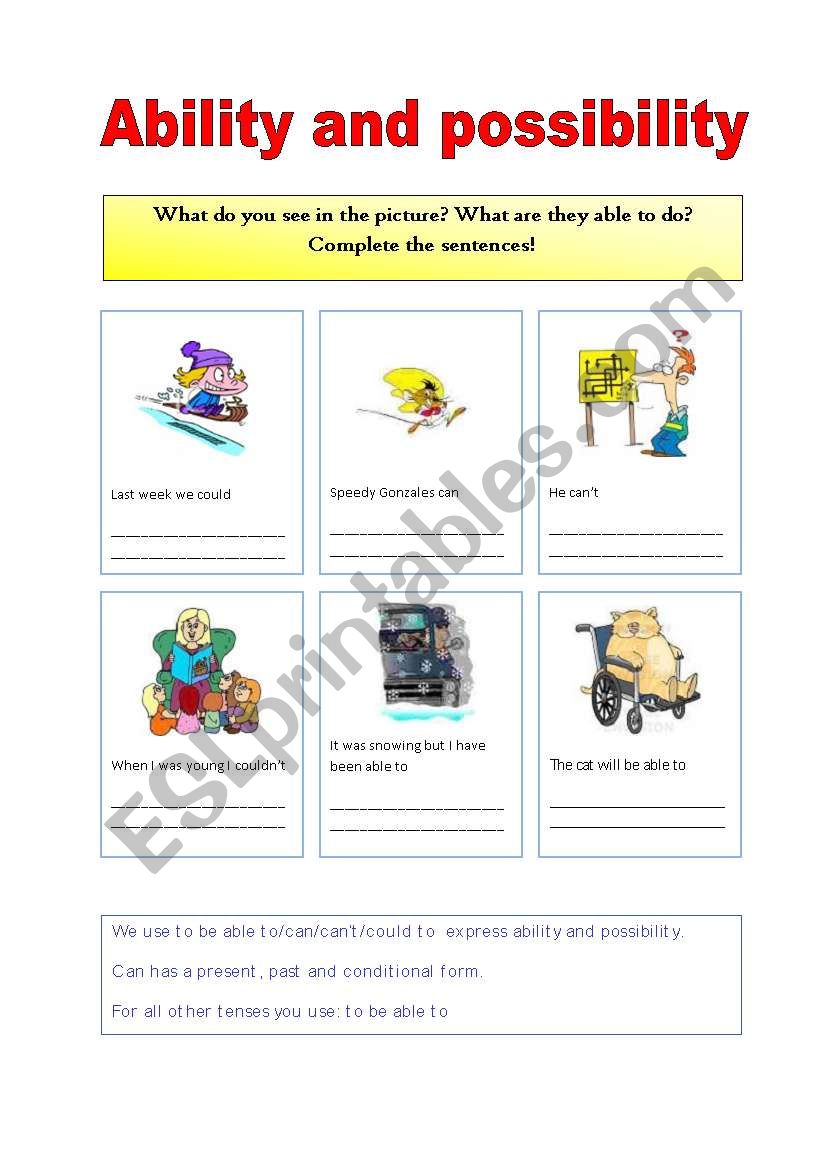
Mastering Nuance: The Indispensable Role of Possibility vs Ability Worksheets
In the intricate tapestry of the English language, few distinctions are as subtle yet crucial as that between possibility and ability. While often conflated, especially by non-native speakers, these two concepts govern entirely different aspects of communication, influencing everything from polite requests to professional assessments. The mastery of this distinction is not merely an academic exercise; it is fundamental to clear, precise, and effective communication. For educators, the challenge lies in making this nuanced difference accessible and intuitive for learners. This is where well-designed possibility vs ability worksheets emerge as an invaluable, indeed indispensable, tool.
This comprehensive article will delve into the core definitions of possibility and ability, explore their linguistic manifestations, highlight the common pitfalls for learners, and, most importantly, elucidate how targeted possibility vs ability worksheets can provide the structured practice necessary for true comprehension and confident application.
Unpacking the Core Concepts: Ability and Possibility

Before we discuss the pedagogical tools, a firm grasp of the concepts themselves is paramount.

Ability: At its heart, ability refers to the skill, power, or capacity to do something. It implies a inherent or learned capability, a competence that exists within the subject. When we speak of ability, we are talking about what someone can or is able to do.

- Key Modals and Phrases for Ability:
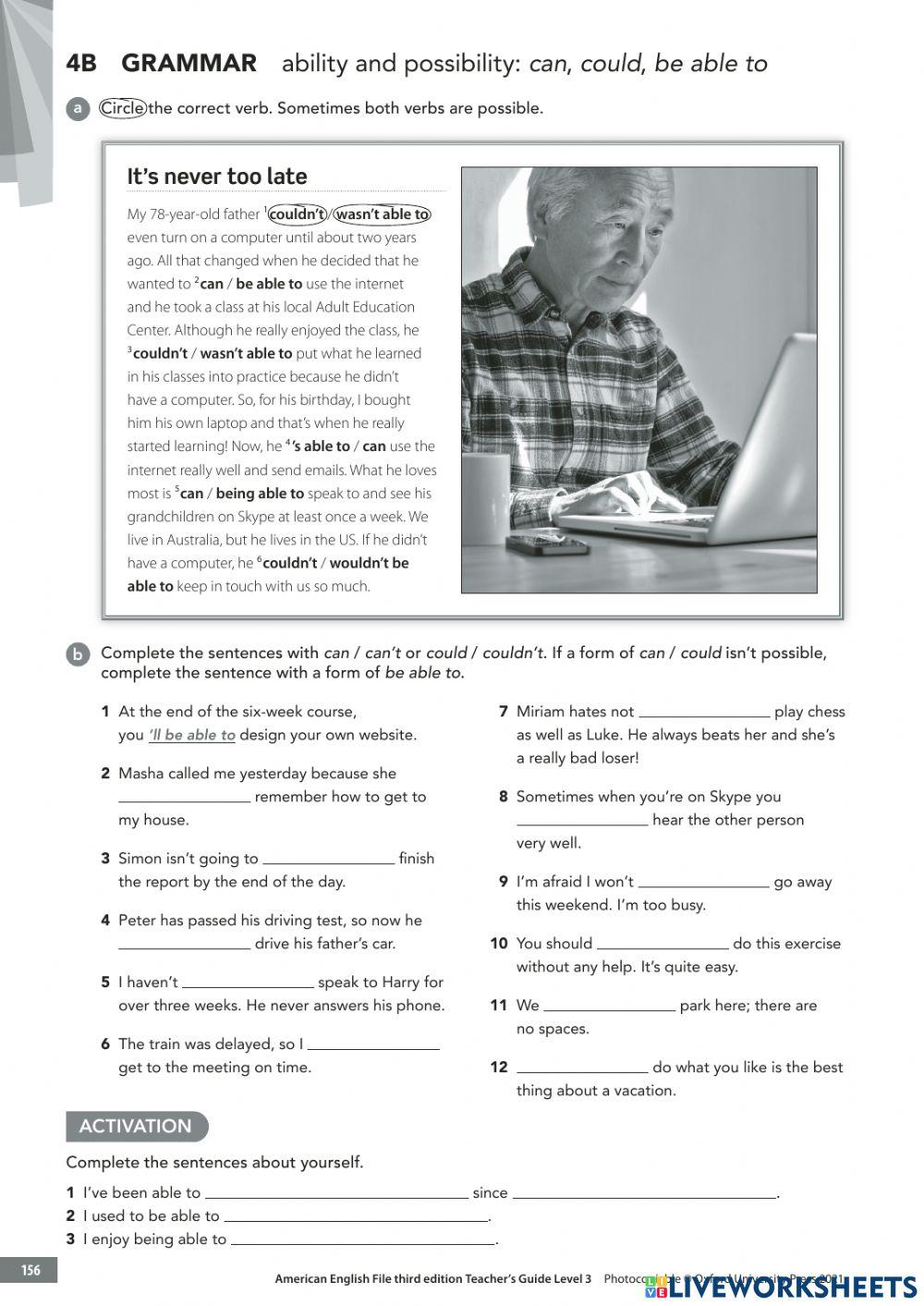
- Can: The most common and versatile modal verb for present ability.
- Examples: "I can speak three languages." (Learned skill) "Birds can fly." (Inherent capacity)
- Could: The past form of "can," used for past ability.
- Examples: "When I was younger, I could run a marathon." (Past physical capability) "She could play the piano beautifully before her accident." (Past learned skill)

- Be able to: A more formal or emphatic way to express ability, often used when "can" is grammatically unsuitable (e.g., in future tenses, perfect tenses, or with infinitives).
- Examples: "I will be able to help you tomorrow." (Future ability) "He has been able to achieve great things." (Ability over a period)
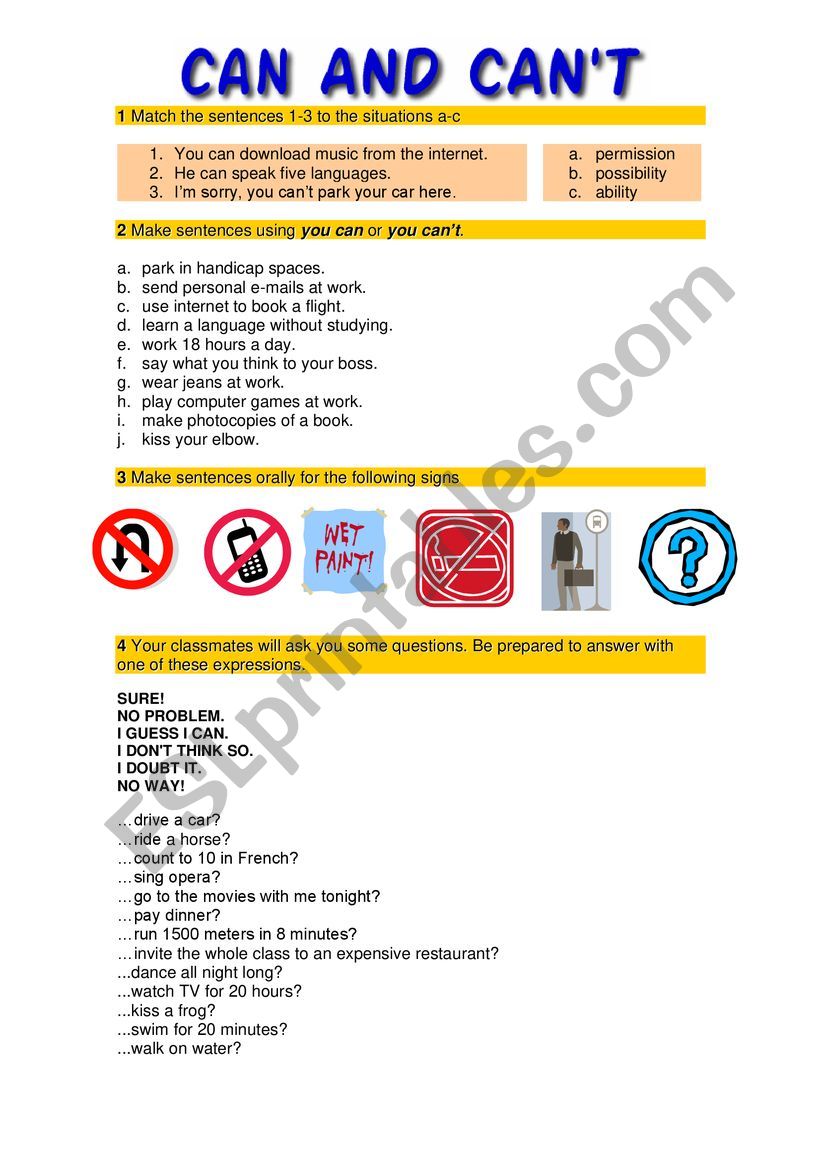

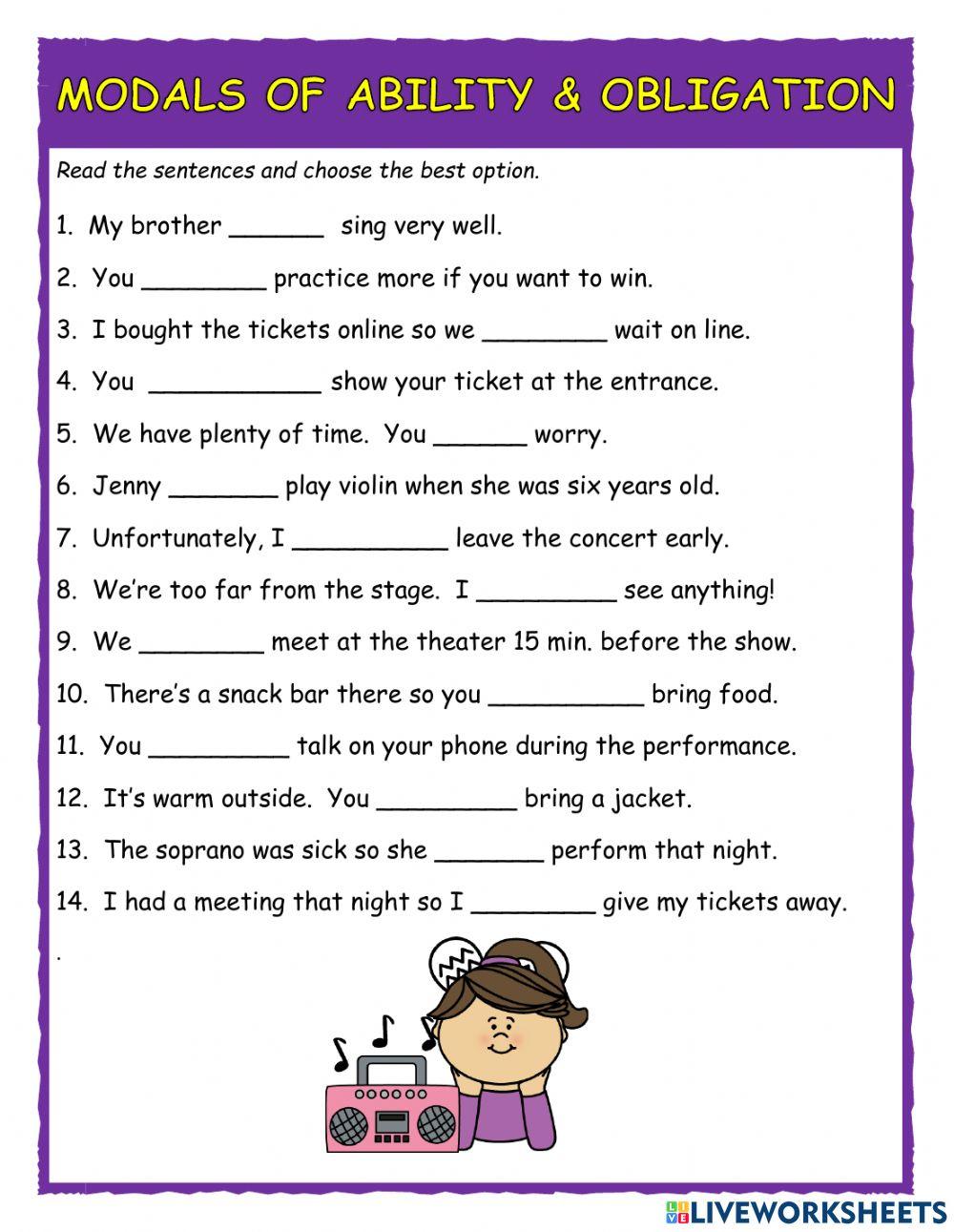
- Can: The most common and versatile modal verb for present ability.
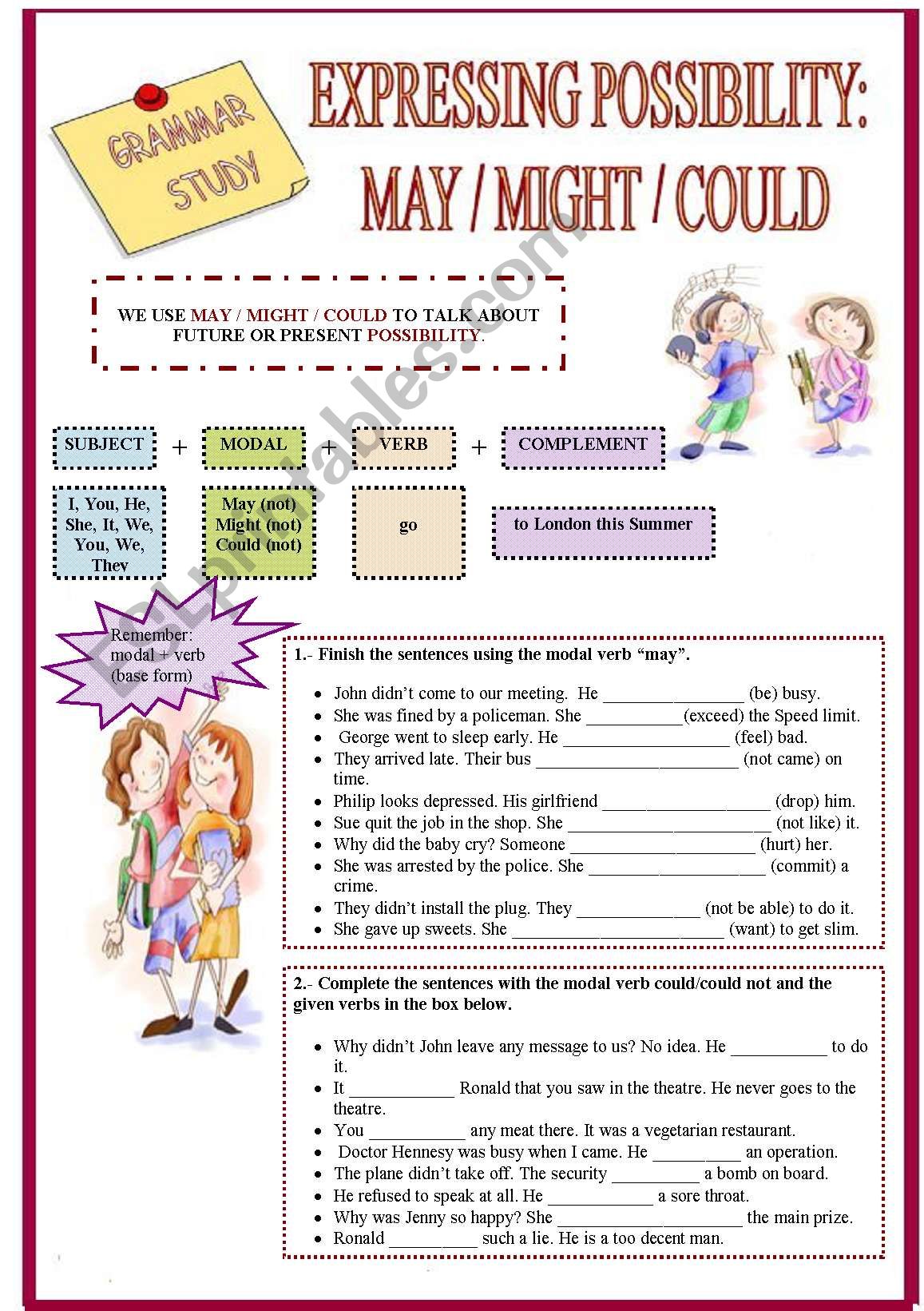
Ability denotes a state of being capable, often implying a degree of control or mastery over the action.
Possibility: In contrast, possibility refers to the likelihood or chance that something might happen or might be true. It deals with uncertainty, potential outcomes, or general truths that could occur under certain circumstances. When we speak of possibility, we are talking about what may, might, or could happen, or what can generally happen.
- Key Modals and Phrases for Possibility:
- May: Indicates a reasonable possibility, often used for permission or future events.
- Examples: "It may rain later." (Future possibility) "He may be at home." (Present possibility)
- Might: Indicates a weaker or more remote possibility than "may."
- Examples: "I might go to the party, but I’m not sure." (Uncertain future possibility) "She might have forgotten." (Past possibility/conjecture)
- Could: Can also express possibility, particularly when suggesting an alternative or a potential outcome.
- Examples: "That could be true." (Present possibility/conjecture) "We could go for a walk if the rain stops." (Future possibility/suggestion)
- Can: While primarily for ability, "can" can also express general possibility or potential, especially in a broad, non-specific sense.
- Examples: "Accidents can happen." (General possibility) "It can get very cold in winter here." (General truth/potential)
- May: Indicates a reasonable possibility, often used for permission or future events.
Possibility introduces an element of conjecture, probability, or potential, where the outcome is not guaranteed and often outside the direct control of the subject.
The Overlap and the Confusion: Why Worksheets Are Essential
The primary source of confusion for learners lies in the overlapping usage of "can" and "could."
- "I can swim" (Ability) vs. "It can get hot in summer" (General possibility).
- "When I was young, I could climb trees" (Past ability) vs. "He could be stuck in traffic" (Present possibility).
This semantic overlap, combined with the fact that many languages have a single word or construction to cover both concepts, makes distinguishing them a significant hurdle for ESL/EFL learners. Misinterpreting these modals can lead to awkward phrasing, miscommunications, or even unintended rudeness. For instance, saying "He can be lazy" when you mean "He might be lazy" changes a statement of general truth about his character to a specific, uncertain possibility.
This is precisely why targeted, repetitive, and context-rich practice is crucial. And there is no better way to provide this structured practice than through well-designed possibility vs ability worksheets.
The Power of Possibility vs Ability Worksheets
Possibility vs ability worksheets are not just supplementary materials; they are foundational tools that bridge the gap between theoretical understanding and practical application. They offer a systematic approach to internalizing these complex grammatical distinctions.
Here’s why they are so powerful:
- Structured Practice: Worksheets provide controlled environments for learners to experiment with the language without the pressure of real-time conversation. They allow for focused attention on specific grammatical structures.
- Repetition and Reinforcement: Mastery comes through repetition. Worksheets offer numerous opportunities to encounter and produce the target language, reinforcing correct usage patterns.
- Varied Exercise Types: Effective worksheets don’t just rely on one type of exercise. They incorporate a range of activities that challenge learners in different ways, catering to diverse learning styles.
- Immediate Feedback (with Answer Keys): When used for self-study or with a readily available answer key, worksheets enable learners to check their understanding immediately, correcting errors and solidifying correct forms.
- Contextual Learning: The best worksheets embed the target grammar within meaningful sentences and scenarios, helping learners understand when and why to use a particular modal.
- Progress Tracking: For both learners and educators, completed worksheets serve as a tangible record of progress and areas that still require attention.
Designing Effective Possibility vs Ability Worksheets
To maximize their impact, possibility vs ability worksheets should be meticulously crafted. Here are key components and exercise types to consider:
-
Clear Explanations and Examples:
- Start with a concise review of the rules for "can/could/be able to" for ability and "may/might/could/can" for possibility, highlighting the subtle differences.
- Provide clear, contrasting example sentences.
-
Identification Exercises:
- Underline and Categorize: Students read sentences containing modals and underline the modal, then identify whether it expresses ability or possibility.
- Example: "She can swim really well." (Ability) "It may rain later." (Possibility)
- Matching: Match sentences to their correct interpretation (e.g., "Ability to perform a skill" vs. "Likelihood of an event").
- Underline and Categorize: Students read sentences containing modals and underline the modal, then identify whether it expresses ability or possibility.
-
Fill-in-the-Blanks:
- Choose the Correct Modal: Provide sentences with blanks and a choice of modals (e.g., "can/could/may/might"). Students must select the most appropriate one based on context.
- Example: "If you study hard, you __ pass the exam." (can/may/might)
- Example: "When I was five, I __ touch my toes." (can/could)
- Complete with ‘be able to’: Exercises specifically focusing on when "be able to" is required.
- Example: "I __ attend the meeting tomorrow because I have another appointment." (won’t be able to)
- Choose the Correct Modal: Provide sentences with blanks and a choice of modals (e.g., "can/could/may/might"). Students must select the most appropriate one based on context.
-
Sentence Transformation:
- Rewrite Sentences: Students transform sentences from one concept to another, or from one modal to another, maintaining the intended meaning.
- Example: "It is possible that he is late." -> "He __ be late." (might/may/could)
- Example: "She has the skill to play chess." -> "She __ play chess." (can)
- Rewrite Sentences: Students transform sentences from one concept to another, or from one modal to another, maintaining the intended meaning.
-
Scenario-Based Activities:
- Respond to Prompts: Provide short scenarios or questions that require students to use modals of possibility or ability in their responses.
- Example: "Your friend is struggling with a math problem. What __ you do to help them?" (can/could for ability)
- Example: "The sky is dark and cloudy. What __ happen?" (may/might/could for possibility)
- Dialog Completion: Fill in blanks in conversations where the context clearly indicates ability or possibility.
- Respond to Prompts: Provide short scenarios or questions that require students to use modals of possibility or ability in their responses.
-
Error Correction:
- Present sentences with incorrect modal usage and ask students to identify and correct the errors. This is an advanced exercise that requires a strong understanding of the nuances.
- Example: "He can be sick, he looks pale." (Incorrect if meaning possibility. Correct to "He might be sick…")
- Present sentences with incorrect modal usage and ask students to identify and correct the errors. This is an advanced exercise that requires a strong understanding of the nuances.
-
Open-Ended and Creative Tasks:
- Write about Your Abilities: Students list things they can do, things they couldn’t do in the past, or things they hope to be able to do in the future.
- Predict the Future: Students write sentences about what might happen tomorrow, next week, or in the future based on current events.
- Role-Play Prompts: Create mini-dialogues where students have to ask about or state abilities/possibilities.
Implementing Worksheets Effectively in the Classroom
Simply handing out possibility vs ability worksheets isn’t enough. Their effectiveness hinges on thoughtful integration into the lesson plan:
- Pre-Work (Concept Introduction): Before assigning worksheets, clearly explain the concepts of ability and possibility, providing ample examples and contrasting usage. Use visuals, realia, or TPR (Total Physical Response) to make the concepts tangible.
- Guided Practice: Start by completing a few exercises together as a class, discussing the reasoning behind each choice. This models the thought process.
- Independent Practice: Allow students to work individually or in pairs on the worksheets. Circulate to offer support and clarify doubts.
- Review and Feedback: Go over the answers as a class. Encourage students to explain their choices, fostering deeper understanding. This is an opportunity to address common errors and reinforce learning.
- Extension Activities: Follow up the worksheets with communicative tasks, such as debates, presentations, or role-plays, where students must spontaneously apply their knowledge of ability and possibility.
Conclusion: A Foundation for Fluent Communication
The distinction between possibility and ability, while subtle, is a cornerstone of precise English communication. Mastering this nuance empowers learners to express themselves with greater accuracy, confidence, and sophistication. For educators, the task of imparting this knowledge can be daunting, but with the right tools, it becomes an achievable goal.
Well-crafted and strategically implemented possibility vs ability worksheets are more than just exercises; they are vital learning instruments. They provide the structured practice, contextual reinforcement, and immediate feedback that learners need to navigate the complexities of modal verbs. By consistently integrating these worksheets into language instruction, educators can lay a robust foundation for their students, enabling them to confidently express what they can do and what might happen, ultimately fostering more fluent and error-free communication in English.
